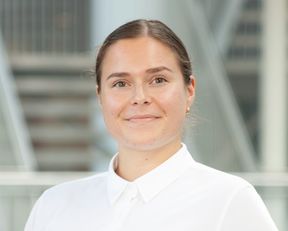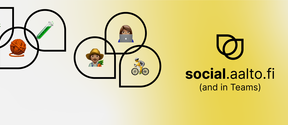‘I wanted to add the business dimension to chemical engineering and to understand how innovations are created’

If climate change is to be brought under control, industry must adopt new technologies and find new possibilities for businesses to use using carbon dioxide. Different kinds of pilot projects have been implemented, but large-scale commercial solutions are few and far between. Obstacles include an incomplete regulation framework encompassing the entire EU, as well as a lack of infrastructure and incentives.
‘At present, a lack of marketing is an impediment to carbon dioxide sequestration. If the value chain is to work, collaboration will be needed across various sectors, including political decision-makers, research institutes, and companies. All of these are needed, and we can no longer stop and wait’, says future Master of Science in Technology Emilia Tognetty.
Sequestered carbon dioxide can be recycled for use in new products, such as methanol, polymers, or concrete, or it can be stored for the long term in the ground or at the bottom of the sea. For example, researchers in Norway are studying sea-bottom storage as one option, but Finland's geographic location does not allow for permanent storage, which is why alternate solutions are needed. If they are to work, market mechanisms and innovations among companies nevertheless require a stable operating environment, which is why cooperation and education are important.
Developing the sequestration of carbon dioxide is also important because it can be applied to industrial processes, such as steel production, where CO2 emissions are difficult to avoid. This makes it possible to significantly reduce the role played by industry in greenhouse gases ending up in the atmosphere.
Emilia's thesis is part of a wider whole which includes three companies and three universities. Emilia's thesis partners are AFRY and Aalto University. Also involved are Metsä Group and the University of Helsinki, which support the thesis regulation linked with the topic, as well as St1 and LUT, which support research linked with the study of the carbon footprint connected with the sequestration and utilisation of carbon dioxide.
Emilia, who is completing her master’s studies in the International Design Business Management (IDMB) programme, sees great potential in chemical engineering. ‘While I was on exchange in Montreal last spring, I happened to see an announcement by Professor Olli Dahl about this thesis spot and I was immediately inspired. It is great to get to work together with others as part of a larger whole. Experts in our field are needed around the world to affect change and to update practices. Technological skills are important and solving complicated challenges also requires an ability to visualise large wholes.’
Emilia Tognetty heard about studies in chemical engineering during a visit while in upper secondary school, and she has been active in guild activities in the student community. Her thesis work on CO2 sequestration is an opportunity to learn about a technology in transition, which can play a significant role in the fight against climate change and in the development of world energy production.
Further information: Emilia Tognetty and Professor Olli Dahl
- Published:
- Updated:
Read more news

Viktar Asadchy receives Young Scientist Award
The Finnish Foundation for Technology Promotion awarded Assistant Professor Viktar Asadchy with the Young Scientist 2024 Award.
Preserving intangible cultural heritage through immersive XR experiences
Aalto University’s Department of Art and Media is coordinating a European wide project on preserving intangible cultural heritage and using it to address societal challenges with the help of immersive XR environments.